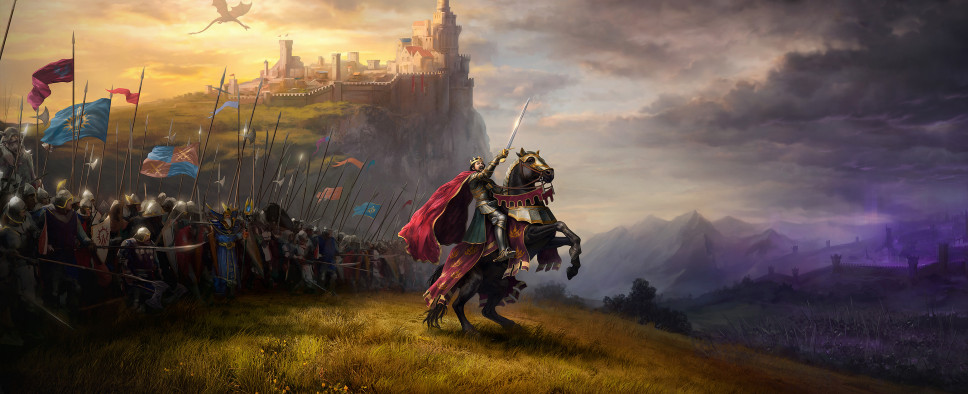King's Bounty II Review
-
Category: ReviewsHits: 14064

Article Index
The other major change for King's Bounty II is that 1C greatly decreased the number of battles. Now most of the battles are tied to quests, and the rest act as roadblocks, so you don't wander into a region until you're powerful enough to survive there. There's actually an achievement for King's Bounty II that you earn for defeating 70 enemy armies. I got it right near the end of my first game (where I was playing Aivar the warrior and following the power ideal, which meant I was fighting extra battles). I'm pretty sure King's Bounty: The Legend had about 70 battles in the first region of the game.
With fewer battles, that means you spend more time running around and talking to people. Some people are shopkeepers (who sell equipment and spell scrolls), some are recruiters (who sell army units), and some give you quests. Luckily, the quests work pretty well. There is a nice variety to the objectives and storylines, the side quests support the main quests and add to the worldbuilding, and because of the opposing ideal objectives, there's even some replay value.
But on the downside, the writing and voice acting are sub-par. The former features a serious but dull tone, and lacks the charm (and kookiness) of the earlier King's Bounty games. The latter involves a lot of people reading their lines so you know what they're saying, but with no emotion behind their words. Plus, with all of the characters looking alike, they and their stories tend to blend together, creating more of a mess than a highlight for the game. As a result, everything outside of combat is at best a mixed bag.
Gameplay: Combat
Enemy armies are indicated by a wide yellow circle around them. If you walk into the circle, then you're shown the units in the opposing army, and you're given the option of retreating or attacking. There isn't any penalty for retreating, and enemies never chase you around, so you always get to pick when to fight.
When a battle starts up, each stack of units involved gets one turn per round, with the order being determined by the units' initiative stat. Your character doesn't participate directly, but you can cast one or two (if you have the top finesse talent) spells per round. Spells mainly buff allies, debuff enemies, or deal damage. All characters can cast spells, but only mages are really good at it.
When a unit takes its turn, it's allowed to move and attack. If a unit makes a melee attack, then their target is allowed to counterattack once per round, which means it's best to gang up on enemies rather than spread your hits around. Ranged attacks don't have to worry about counterattacks. This is the same ruleset as employed by King's Bounty: The Legend and its follow-ups, where as a result ranged attackers were the dominant force.
To mitigate this dominance, 1C added 3D terrain to their battle maps. Now ranged units need to have line-of-sight to attack enemies, and things like trees and hills and haystacks can get in the way. Unfortunately, sometimes flat ground and low bushes get in the way as well, so it's still a work in progress. But I think the idea is right, to make melee units more useful.
Most of the units in the game fall into one of three categories: melee unit, ranged unit, or spellcaster. There are a couple of dragon units that become available at the end, but otherwise the units are pretty cut-and-dried. Nothing is as creative as, say, King's Bounty: The Legend's goblin shamans with their totems, or giants with their earthquake ability. It's pretty much just melee attack, ranged attack, or spell (which is frequently just a disguised ranged attack) over and over again in different shapes and flavors. Still, because the Resurrection spell takes a while to find, it's difficult to keep all of your units alive, and so there's always strategy in the battles.

